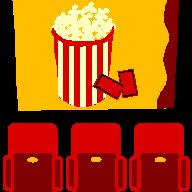His idea, he tells us, is to demonstrate the massive volume of paid product placements we Americans are being subjected to in the movies and TV shows we watch every day. We're being bombarded without realizing it. It's an interesting, if not critical, topic, and there's plenty more that could have been done with it.
Spurlock wants to point out how insidious product placement is by getting the very corporations guilty of it to fund the movie exposing it. Here's how we know we're not going to be seeing a take-no-prisoners, blow-the-lid-off-some-secret-shenanigans documentary: No legitimate company (and Spurlock signs legit sponsors) is going to put up big bucks to come off looking foolish. Of course, these companies are going to see to it they get publicity -- good publicity -- out of their sponsorship. So, the movie is more entertainment than expose. More an in-joke than an indictment.
Spurlock talks to the big ad honchos who help fund movies and TV shows in exchange for shots and positive mentions of their beverage, car, computer, candy and any number of other consumer goods. He talks to big-time directors (Quentin Tarantino, Brett Ratner, J.J. Abrams), who all more or less say, "Yeah, it happens. What're ya gonna do?" In fact, blockbuster movies do not get made without product placements. Period.
And, corporate sponsors sometimes have the right to make changes to the script to ensure their product is seen in the best possible light.
Spurlock talks to consumer advocates -- Ralph Nader, among them -- who say it's deceptive for movies and TV shows not to let viewers know when they're being advertised to. We know when we're seeing a commercial break. We're not quite as sure when a TV character declares her love for Dr Pepper if it's in the script because the writer put it there -- or because of a product placement contract. (The safe bet is that money has changed hands.)
Spurlock asks the question to media types, brand specialists and men and women on the street: "Is there truth in advertising?" Interesting question, and there's no clear consensus by the end of this movie.
If you like your documentaries hard-hitting and enjoy seeing a corporate honcho squirm while cameras are rolling, this ain't your movie. It is fun, however, to watch Spurlock collect sponsors. (I commend the companies willing to go along with this stunt, particularly the POM Wonderful folks, who know, love and want to protect their band.)
By contrast, I was startled to see Spurlock ask the ban deodorant marketing teams how they'd describe their brand. Utter silence. One of them said, "That's a really good question," while the others looked down nervously. If the brand managers can't articulate what the brand stands for -- and it's been caught on camera -- that's a problem senior managers should be looking into. I doubt Spurlock wanted that moment to be the biggest gasp! of his movie, but it was mine.
Spurlock wants to bring transparency to the secretive world of product placements. A noble goal, but it was never going to be achieved after asking the "villains" to out themselves. The movie could've been a serious look at how invasive advertising is now that we can fast forward through commercials. Instead, it's a not-so-serious look at the lengths companies will go to to reach us where we least expect it. In spite of its flaws, I still say: See it.




